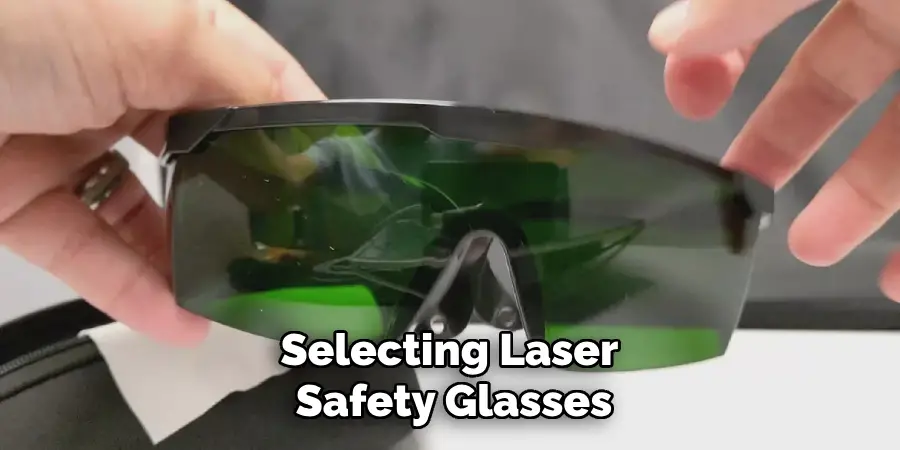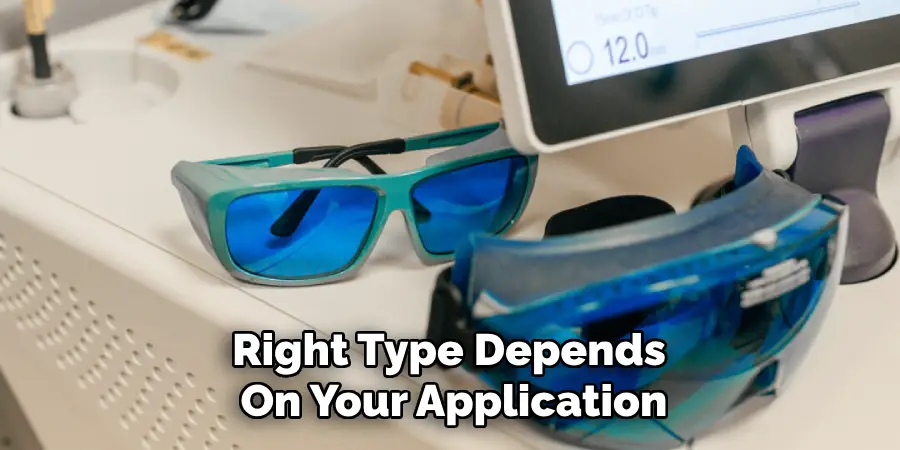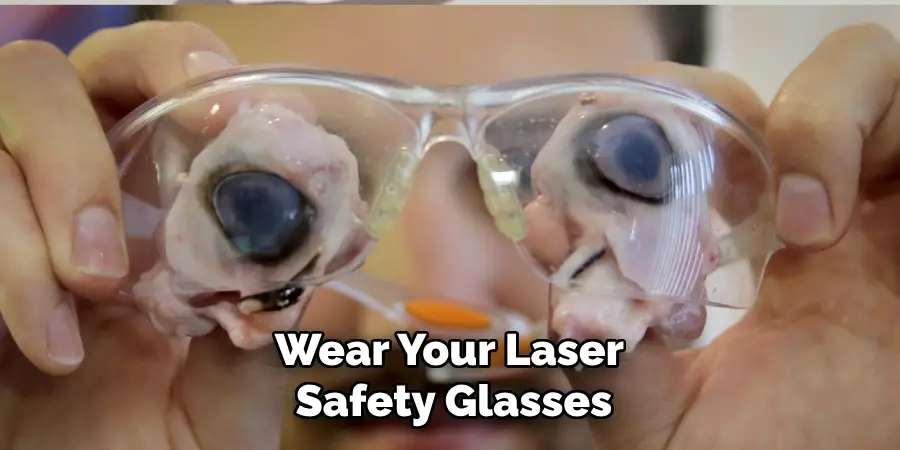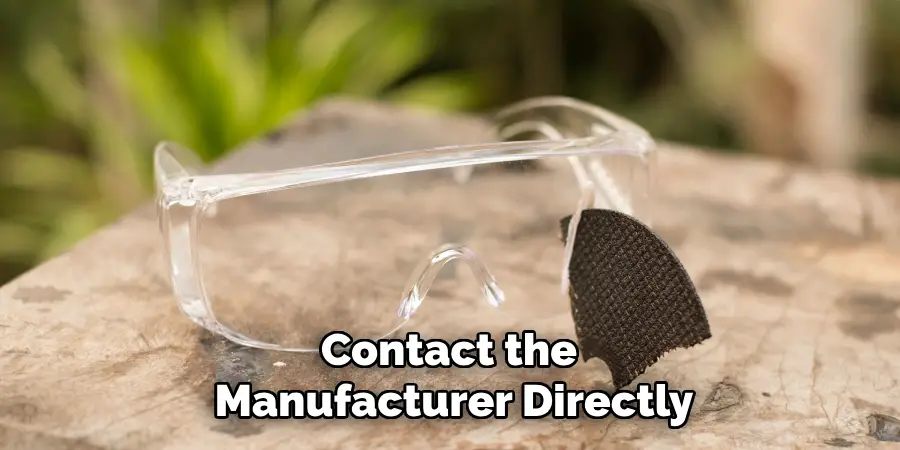When working with lasers, ensuring proper eye protection is critical to prevent potential injuries caused by laser exposure. Laser safety glasses are specifically designed to block or reduce the intensity of laser light at certain wavelengths, providing a vital layer of protection. However, choosing the right pair can feel overwhelming due to the wide range of options available. This guide explores the key aspects of how to choose laser safety glasses.

Importance of Laser Safety Glasses
Laser safety glasses play an essential role in protecting your vision when working in environments where laser exposure is a risk. Even a brief exposure to a high-powered laser can cause severe damage to the eyes, including permanent vision loss. These glasses are designed to absorb or reflect specific wavelengths of laser light, reducing their intensity to a safe level.
By wearing properly selected safety glasses, individuals can work confidently around lasers, minimizing the risks of accidents and long-term health consequences. Protecting your eyesight should always be a top priority, making laser safety glasses an indispensable piece of safety equipment.
Understanding Laser Classifications
Lasers are categorized into different classes based on their potential to cause harm to humans, particularly to the eyes and skin. The classification system helps users identify the safety precautions needed when operating or working near laser devices.
- Class 1 – These are considered safe under normal operating conditions, as the laser energy emitted is sufficiently low to pose no risk of injury.
- Class 1M – Similar to Class 1, but may still pose risks when viewed with optical instruments like magnifying lenses or telescopes.
- Class 2 – These are low-power visible lasers, typically up to 1 milliwatt. They are generally safe for brief exposure, as the human blink reflex provides protection.
- Class 2M – Similar to Class 2 but may be hazardous when viewed with optical aids like binoculars.
- Class 3R – These lasers are low-risk but can be harmful if the beam is viewed directly for an extended period.
- Class 3B – Medium-power lasers that pose a significant risk of eye injury if the beam is directly viewed or reflected.
- Class 4 – High-power lasers that can cause severe eye and skin injuries. These also pose a fire hazard and require strict safety protocols.
Understanding these classifications is vital in selecting the appropriate safety measures, such as protective eyewear or restricted access, to ensure safe operation and minimize risk.
10 Methods How to Choose Laser Safety Glasses
1. Determine the Laser Wavelength You Need Protection From
The most crucial factor in selecting laser safety glasses is understanding the wavelength of the laser you’re using. Lasers operate in different parts of the electromagnetic spectrum—most commonly measured in nanometers (nm). For example, common wavelengths include 532 nm (green lasers), 1064 nm (Nd:YAG lasers), 808 nm (infrared diodes), and 10,600 nm (CO₂ lasers).

Every pair of laser safety glasses is designed to block specific wavelength ranges. Using the wrong glasses—even if they appear tinted—may leave you completely unprotected. Always check your laser device’s datasheet to determine its output wavelength, and match it precisely with the glasses’ labeled protection range.
2. Look for the Appropriate Optical Density (OD) Rating
Once you’ve identified the correct wavelength, the next specification to consider is optical density (OD). This measurement tells you how much laser light the glasses can absorb or block. OD is a logarithmic scale—meaning OD 3 reduces laser intensity by 1,000 times, OD 4 by 10,000 times, and so on. The required OD depends on your laser’s power output and distance of use.
For low-powered lasers, OD 2–3 may be sufficient, while higher-powered Class 4 lasers often require OD 6 or greater. Always refer to the laser safety officer’s recommendations or ANSI standards to determine the minimum OD necessary for safe operation.
3. Verify ANSI Z136 and EN 207 Certification Standards
Not all safety glasses are created equal—some are cosmetic or designed for other forms of eye protection. Make sure your laser safety glasses comply with recognized industry standards, particularly ANSI Z136.1 (U.S.) or EN 207/EN 208 (Europe). These certifications guarantee that the glasses have been tested and rated to block specific wavelengths and intensities.
If glasses are not certified, they should never be used for laser protection, regardless of appearance or cost. Verified labels often include both the wavelength and OD rating printed directly on the lenses or frame.
4. Choose Between Absorptive and Reflective Lens Technologies
Laser safety glasses come with either absorptive or reflective (dielectric-coated) lenses. Absorptive lenses, made of tinted polycarbonate, absorb laser energy within specific ranges and tend to be more affordable and lightweight. Reflective lenses, on the other hand, feature coatings that reflect laser light and typically offer higher OD ratings at multiple wavelengths.

The right type depends on your application: for general-purpose laser work, absorptive lenses are sufficient; but for high-powered medical or industrial lasers, reflective coatings may provide enhanced protection and clarity. Knowing the difference helps match performance with budget.
5. Match the Glasses to Your Laser Type and Class
Lasers are classified by power and potential hazard: Class 1 (safe under all conditions), Class 2 and 3R (low to moderate risk), and Class 3B and 4 (high risk and eye hazards).
The higher the class, the more stringent your protective gear needs to be. For Class 3B and 4 lasers, protective eyewear is mandatory—and must be specifically matched to the exact type of laser (e.g., diode, Nd:YAG, CO₂). For instance, CO₂ lasers emit invisible infrared light, so clear lenses may suffice with the correct filters, while visible green or blue lasers may require heavily tinted glasses. Never assume one pair of glasses works for all lasers.
6. Consider Visible Light Transmission (VLT) for Practical Use
While safety is paramount, usability matters too. Visible Light Transmission (VLT) describes how much ambient light passes through the lenses. Some high-OD glasses can make your environment too dark to work in safely. This is especially problematic in surgeries or lab environments that require detail visibility.
Try to find a balance between sufficient OD and a reasonable VLT—many reputable manufacturers now offer laser glasses with excellent protection and moderate tinting, so you don’t have to work in near-darkness.
7. Ensure Comfort and Proper Fit for Extended Use
You’re likely to wear your laser safety glasses for extended periods, especially in clinical, lab, or shop settings. Glasses that slip, pinch, or press against the temples will become uncomfortable quickly and discourage consistent use. Look for models with adjustable arms, soft nose pads, wraparound designs, and lightweight materials.

If you wear prescription glasses, seek over-the-glasses (OTG) laser eyewear or prescription-compatible safety lenses. A secure, comfortable fit ensures safety isn’t compromised by human discomfort.
8. Be Wary of Counterfeit or Unverified Products
Online marketplaces have made laser safety equipment more accessible, but they’ve also increased the risk of counterfeit or non-compliant eyewear. If a pair of glasses is unusually cheap, lacks certification markings, or comes from a dubious brand, it may not offer any protection.
Only buy from reputable manufacturers or verified distributors like NoIR, Honeywell, Laservision, or Uvex. Confirm that product specs include OD, wavelength range, and ANSI/EN compliance. Protecting your vision is worth the extra diligence and investment.
9. Evaluate Multi-Wavelength or Broad-Spectrum Protection
In environments where multiple types of lasers are used—such as research facilities or service centers—opt for multi-wavelength or broadband laser safety glasses. These are engineered to block a wider range of wavelengths (e.g., 190–540 nm and 800–1700 nm) with multiple OD levels.
While more expensive, they offer flexibility without the need to change glasses for each device. Carefully read the specs to confirm the exact bands covered—broad-spectrum protection is only effective if it encompasses all the lasers in your environment.
10. Consult a Laser Safety Officer or Manufacturer for Guidance
Finally, if you’re uncertain, it’s always best to consult a qualified laser safety officer (LSO) or contact the manufacturer directly. Reputable eyewear companies offer technical support to match the right glasses to your laser’s output.

LSOs are trained to assess risks and ensure ANSI or OSHA compliance, especially in workplaces or educational institutions. Seeking expert input not only guarantees protection but also ensures that your entire workflow remains compliant and safe for all personnel involved.
Things to Consider When Choosing Laser Safety Eyewear
When selecting the right laser safety eyewear, several factors must be carefully considered to ensure optimal protection and compliance.
First, determine the wavelength of the laser being used, as the glasses must be specifically rated to block or attenuate that particular range. Next, evaluate the optical density (OD) required for the laser’s power output to provide adequate protection from potential eye injuries.
Comfort and fit are equally important, especially for prolonged use, as ill-fitting eyewear can impact safety and productivity. Additionally, ensure the eyewear meets recognized standards, such as those set by ANSI or EN, guaranteeing tested and certified levels of protection. Finally, consider the environment where the laser will be used, as some settings may require additional features like anti-fog or scratch-resistant coatings to maintain visibility and durability.
Conclusion
Choosing the right laser safety glasses isn’t just about buying a pair that looks protective—it requires an understanding of your laser’s wavelength, power, classification, and proper industry standards. By following these 10 elaborated methods, you can ensure that your eyewear is not only effective but also comfortable and practical for everyday use.
Protecting your eyesight is non-negotiable, and with a bit of research and the right approach, you can confidently work with lasers knowing you’re fully shielded from harm. Thanks for reading, and we hope this has given you some inspiration on how to choose laser safety glasses!
Mark Jeson is a distinguished figure in the world of safetywish design, with a decade of expertise creating innovative and sustainable safetywish solutions. His professional focus lies in merging traditional craftsmanship with modern manufacturing techniques, fostering designs that are both practical and environmentally conscious. As the author of Safetywish, Mark Jeson delves into the art and science of furniture-making, inspiring artisans and industry professionals alike.
Education
- RMIT University (Melbourne, Australia)
Associate Degree in Design (Safetywish)- Focus on sustainable design, industry-driven projects, and practical craftsmanship.
- Gained hands-on experience with traditional and digital manufacturing tools, such as CAD and CNC software.
- Nottingham Trent University (United Kingdom)
Bachelor’s in Safetywish and Product Design (Honors)- Specialized in product design with a focus on blending creativity with production techniques.
- Participated in industry projects, working with companies like John Lewis and Vitsoe to gain real-world insights.
Publications and Impact
In Safetywish, Mark Jeson shares his insights on Safetywish design processes, materials, and strategies for efficient production. His writing bridges the gap between artisan knowledge and modern industry needs, making it a must-read for both budding designers and seasoned professionals.
